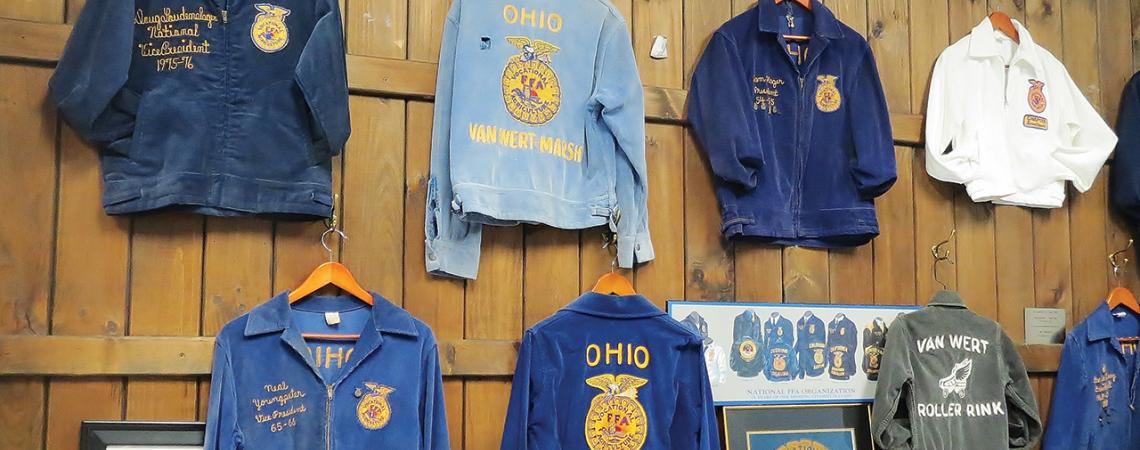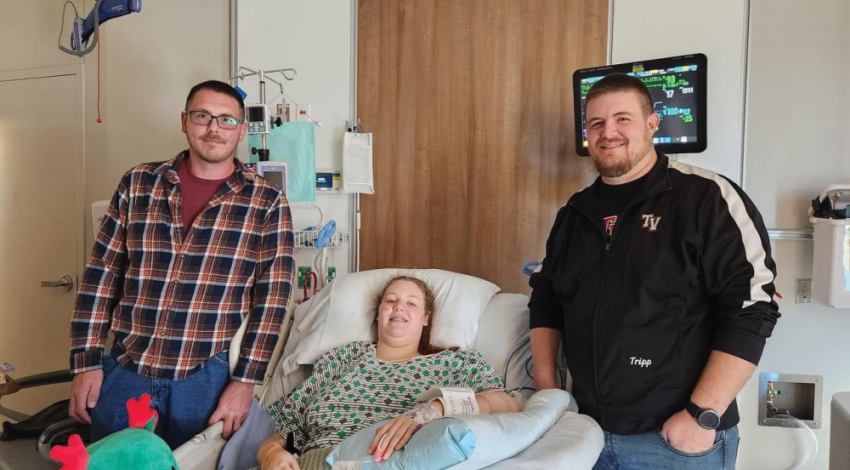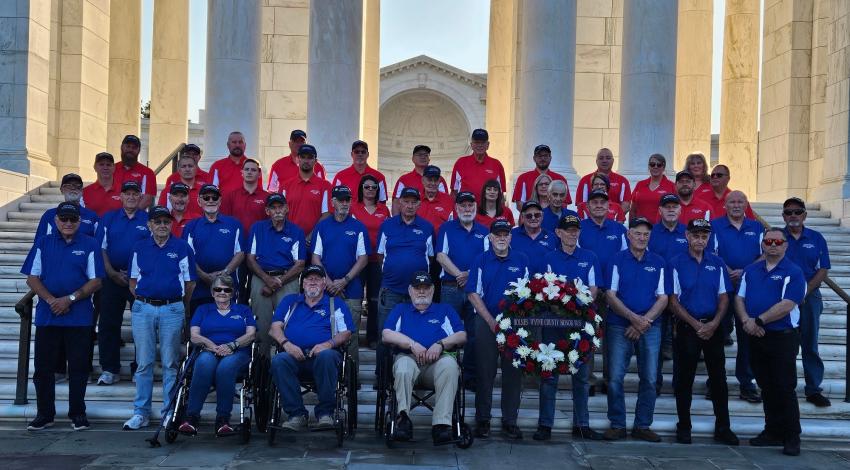On the wall at Universal Lettering is a display of FFA jackets from different eras — though they have stayed mostly the same since their 1933 debut.
When general manager Cory Hoops gives tours of the Universal Lettering Company’s Van Wert facility to FFA members, it’s often an eye-opening experience for them. “I remember this schoolgirl telling us she had no idea that so much labor goes into producing FFA jackets,” says Hoops. “She was excited and amazed to see how hers was made.”
Started in the 1920s to provide agricultural education, work experiences, and leadership training to farmboys, the National FFA Organization has evolved into a congressionally chartered, intra-curricular organization that now includes girls, with specific provisions for including minorities and city kids. Some middle school and collegiate chapters exist, but most FFA members are high-schoolers studying everything from aquaculture and agribusiness to food science and natural resources.
While the Indianapolis-based organization has experienced growth and change over the years, two FFA icons have remained constant — the blue and gold emblem that adorns the back of every FFA jacket, and the blue corduroy jackets themselves. The jackets have been part of FFA’s official dress uniform for 84 years, and countless young people have worn them with pride.
“The jacket gives FFA members confidence and makes them feel that they’re part of something larger than themselves because it’s so steeped in tradition,” notes Lee Anne Shiller, division director of the organization’s membership and merchandise services.
The jacket originated after the advisor of the Fredericktown FFA chapter contacted Van Wert’s Universal Uniform Company. “Dr. Gus Lintner had seen a blue corduroy jacket with a chenille bulldog on the back in a store window,” says Hoops, “and he asked Universal Uniform, which was our company’s predecessor, to produce a similar one for his chapter.” When the Fredericktown band members sported them while performing at FFA’s 1933 national convention in Kansas City, the new jackets looked so handsome that the delegates voted to adopt the design.

Styled with long sleeves, a pointed collar, and buckle tabs at the waist, the FFA jacket has stayed basically the same since 1933. “There have been only subtle changes because the jacket is so important to FFA members,” says Hoops. While jackets initially had front snaps, square pockets, and an embroidered emblem, current jackets have a zipper, rounded pockets, and a patch emblem.
Until hard times forced it into bankruptcy in the late 1980s, Universal Uniform made about 150,000 FFA jackets annually. Lima CPA Mark Hoops and other investors revived the business in 1991. They renamed it Universal Lettering, acquired high-tech sewing and embroidery equipment, and eventually moved its operations to a modern industrial park. Today, Universal Lettering produces branded apparel as well as custom chenille patches for clients that include 4-H clubs, varsity sports teams, marching bands, corporations, and clothing companies.
As for FFA jackets, most are now made in Vietnam, but Van Wert workers still play a major role in producing and delivering them.
“Universal Lettering cuts and sews about 25 percent of all the jackets, but we do 100 percent of the embroidery and shipping to FFA members,” says Hoops. “We’ll ship about 80,000 jackets this year.”
Each FFA jacket consists of 26 individual pieces of cotton fabric, and from attaching the emblem on the back panel to double-stitching seams, Universal Lettering employees complete 35 separate sewing operations to make a jacket. During the busy season, they turn out 1,000 jackets with customized embroidery every day. “Starting the second week in September, we embroider 24/7 for two months,” says Hoops.
Imported FFA jackets cost $50, but for an extra $15, members can buy a made-in-the-USA jacket from Universal Lettering. For additional fees, the company also tailors new jackets and, in a nod to its singular FFA heritage, re-letters vintage ones. “Our workers put a lot of care into every stitch,” says Hoops. “They think about the extraordinary number of FFA jackets that have been made in Van Wert over the years, and some are FFA moms themselves.”









